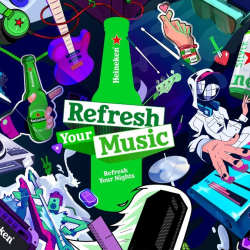I’m a little late writing this article…
Which means I’ve been pondering exactly why this is an age of such discontent for quite a while. My pinpointed culprits have veered wildly because, let’s face it, there’s currently a plethora of things to be unhappy about. But as The Economist recently highlighted, unhappiness has actually been rising for a decade, long before the current perma-crisis began. So, what is driving this? It took an idle comment from my 7-year-old child to hone my focus.
‘Why do you watch the news every day when it’s always about murders or deaths or disasters, mummy?’ she pondered. I mean, we’d be watching The Babysitter’s Club ad-infinitum if it were up to her, but at least it tells broadly positive stories about friendship and humanity, a stark contrast to what we see solemnly reported on the news each night. I switched channels and got involved in Richard Osman’s House of Games instead. My interest piqued by yet another seemingly bizarre facet to human behaviour, I wanted to know the reason why we’re unable to tear ourselves away from the negative. How have things got so bad that we need to remind ourselves to find just three positive things each day for our gratitude journal?

Firstly, we should relieve ourselves of some guilt as we can blame our ancestors to an extent. Constantly searching for danger is an evolutionary hangover from when learning as much as possible about the immediate environment was advantageous. After all, if a roaming Glyptodon was at your cave door* you didn’t want to be caught unawares, writing in your gratitude journal.
But what positive role does it have in the modern day?
And how did our love of misery evolve so far that we have a specific word for consuming it, in Doomscrolling? This term was coined in 2020, but long before that psychologists discussed the phenomenon known as ‘mean world syndrome,’ the belief that the world is a more dangerous place than it actually is as a result of exposure to violence-related content.
And the act of doomscrolling is genuinely damaging. At the University of Sussex, a study saw participants watching news consisting of either positive, neutral, and negative material. Those consuming the negative news programs showed an increase in anxiety, sadness, and catastrophic tendencies regarding personal worries. Over in Washington researchers identified (through using transcranial magnetic stimulation in the interior frontal gyrus if you want science!) that doomscrolling exposes the brain to such great quantities of unfavourable news that it physically restricts the brain’s ability to embrace good news. And it gets worse, with studies showing that seeing upsetting news leads people to seek out more information on the topic, creating a self-perpetuating cycle.
People’s brains aren’t well equipped to deal with the information age, they are constantly checking, checking, checking for news. That is totally unhelpful. Our modern lifestyles could be re-sculpting circuits in our brain that have evolved over millions of years
Ilya Monosov, Neuroscientist
Everything seems against us
The more bad news we consume, the more we seek, and the more we seek, the more our brain’s defences against negative news are dismantled. Working in tandem with this we know online algorithms usually deliver ‘same but different’ content. We’re under siege! How can we break out? Well, for a start we can try to begin our day on a more optimistic note. A study in The Huffington Post found participants who watched three minutes of negative news in the morning were 27% more likely to report experiencing a bad day hours later. In contrast, the group who watched solutions focused news reported a good day 88% of the time. So, perhaps, join the ever increasing group of people (currently 38%) who admit to actively avoiding news.
As marketers and advertisers we have a chance to change things — we could start with looking to spread positivity. A long-term Harvard study found happiness spreads through social networks like an emotional contagion. One person’s happiness triggers a chain reaction that benefits not only his friends, but his friends’ friends, and his friends’ friends’ friends. And this effect lasts up to a year. Getting to the bit we know matters — spreading happiness and positivity makes good business sense. Consumers consistently report enjoying humorous ads the most, so why have Kantar found them in steady decline? Only a third of ads use intentional humour on TV and this falls even further when it comes to digital (28%) and social (24%).
It seems our advertising landscape is a pretty joyless place to be, at the very time it matters most. So, let’s help the poor brains of Britain out, protect them against the barrage of bad news, flood them with joy, and stop bloody doomscrolling!
Featured image: Michelle Yeoh in ‘Everything, Everywhere, All At Once (2022)‘


































